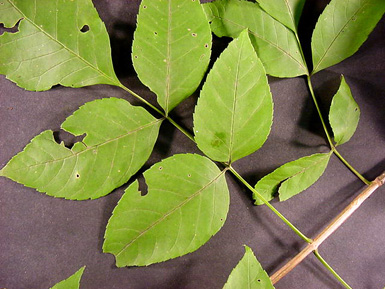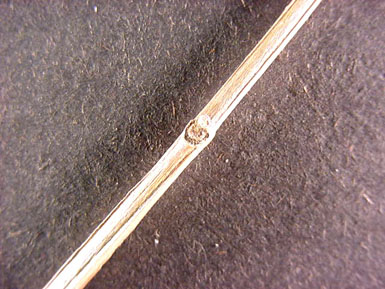Form: This is a medium sized tree with a height to 80 feet tall and a width of 2 ft. It has a short bole and an irregular crown.
Leaves:
Arrangement: opposite; pinnately compound normally with 7-11 leaflets
Shape: lanceolate
Margin: serrated
Texture: glabrous
Venation: pinnate

Bark: Blue ash bark is brown to ash gray, and rough and scaly when young. When the tree matures it forms irregular fissures and scaly ridges giving a shaggy appearance.
Twigs and buds: It has a relatively stout twig that is 4-angled. The leaf scars are notched and the buds are gray to reddish brown in color.

Flowers and fruit: The flowers occur in panicles that appear before the leaves. The fruit is a samara, with a wide wing and a flattened seed.
Distinguishing characteristics: It has opposite compound leaves and the twigs have 4 distinct edges. The inner bark turns blue when exposed to air.

Range: Blue ash is found in Southern Wisconsin west to Ohio, south to northern Georgia and west to eastern Oklahoma.
Silvics: This species in most common on calciferous dry limestone uplands.
Ecological and cultural importance: It was once used for blue dye by the pioneers. The wood is used in flooring, baseball bats, furniture, tool handles, barrels and crates.